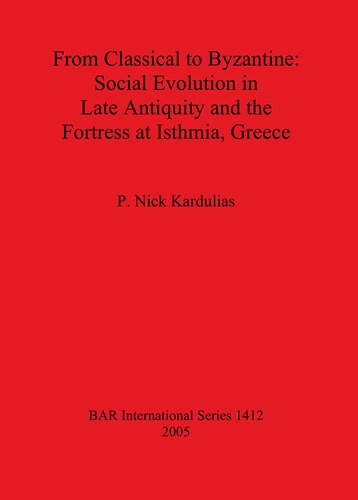

Most ebook files are in PDF format, so you can easily read them using various software such as Foxit Reader or directly on the Google Chrome browser.
Some ebook files are released by publishers in other formats such as .awz, .mobi, .epub, .fb2, etc. You may need to install specific software to read these formats on mobile/PC, such as Calibre.
Please read the tutorial at this link: https://ebookbell.com/faq
We offer FREE conversion to the popular formats you request; however, this may take some time. Therefore, right after payment, please email us, and we will try to provide the service as quickly as possible.
For some exceptional file formats or broken links (if any), please refrain from opening any disputes. Instead, email us first, and we will try to assist within a maximum of 6 hours.
EbookBell Team

4.1
50 reviewsThis book attempts to bring an anthropological perspective to the historical archaeology of a complex period in the Greek past. Traditionally, discussion of the transition from Late Antiquity to the Early Byzantine period in the Aegean region has focused on the fate of Classical urban culture. Scholarly opinion is divided as to whether the Classical polis and its constituent institutions emerged intact from the disruptive events of the third to sixth centuries A.D. Over the past two decades a consensus has emerged that argues that the break between Classical and Byzantine occurred in the seventh, not the fourth or fifth centuries A.D., and that it was a more gradual process than previously believed. The present study examines the Byzantine Fortress at Isthmia in the Peloponnese with an eye to understanding social change in this critical period, at the level of the site and then the region, in terms of an evolutionary perspective . This study focuses on three problems at different levels of abstraction: (1) A descriptive problem – gathering more information about the Medieval occupation at Isthmia; delineating the structural features of the Byzantine Fortress with the ultimate intent of comprehending site functions through time. (2) A methodological problem – the use of geophysical techniques to examine the subsurface of the Fortress and other selected spots to obtain the data necessary for proper description. (3) A broader historical problem – how best to reconstruct the key events pertaining to the transition from Late Antiquity to Early Byzantine. The methodological element becomes the link between the gathering of site-specific data and the wider historical implications for that information.